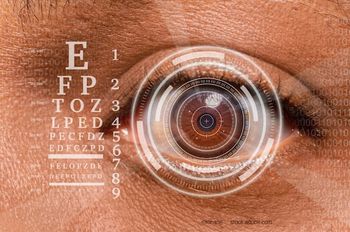
- Ophthalmology Times: October 15, 2020
- Volume 45
- Issue 17
Deep learning algorithm proven accurate for AMD classification
Algorithm detects, stratifies severity of disease, facilitates early diagnosis.
This article was reviewed by Sharmina Alauddin, MD
An artificial intelligence (AI)-based telemedicine platform for screening and early diagnosis of
The deep learning algorithm’s (iPredict.health, iHealthScreen Inc USA) performance for classifying fundus images was evaluated using the gradings from expert human readers as the reference standard.
Related:
The analyses showed that the AI-based platform had 88.67% accuracy, 86.57% sensitivity, and 90.36% specificity.
“The results of our trial show that the tool is now ready for clinical use and potential deployment for remote telemedical use,” said Alauddin, a clinical research associate at the New York Eye and Ear Infirmary of Mount Sinai, New York, New York.
Alauddin and colleagues investigated the AI-based system’s performance in detecting and stratifying severity of
“It is well known that AMD is a major cause of blindness among adults aged 50 years and older in developed countries,” Alauddin said. “If we are able to diagnose
The deep learning algorithm was originally developed and tested using images from the Age-Related Eye Disease Study (AREDS).
Related:
“A deep learning algorithm teaches itself from massive datasets through artificial and neural networks. It mimics how our brain works to solve problems,” Alauddin said.
The validation study was performed using prospectively acquired, color fundus images obtained from 160 nondilated patients aged 50 years and older seen in New York Eye and Ear Infirmary-affiliated eye clinics.
After excluding patients who had another type of retinal degeneration, prior retinal surgery, diabetic retinopathy, or macular edema and images with poor quality, images from 290 eyes of 150 subjects were included in the analysis.
Based on the worst eye, patients were automatically classified by the software as referable AMD or nonreferable AMD. Referable AMD included intermediate AMD (drusen >125 μm and/or pigmentary abnormalities) and late
Related:
In addition, each image was independently reviewed and graded by two ophthalmologists. The performance of the AI-based system was evaluated by comparing its results with those of the expert human graders.
After adjudication of grading discrepancies, 66 images were classified as referable and 84 images as nonreferable. The AI-based program correctly identified 58 images of intermediate and advanced AMD and 75 images that were normal or early
The investigators believe that for public health service, it is both warranted and feasible to create a more comprehensive, fully effective system trained on other retinal pathologies.
--
Sharmina Alauddin, MD
e:[email protected]
Alauddin has no relevant financial interests to disclose.
Articles in this issue
about 5 years ago
Study: Some RP abnormalities are linked with lower visual acuityabout 5 years ago
Teleretinal screening: Effective, less costly option for DRabout 5 years ago
Investigators challenge IOL power calculationsabout 5 years ago
The history of progress and innovation in cataract surgeryabout 5 years ago
ICLs: Investigators finding robust and stable results over long termabout 5 years ago
Exploring four decades of change in retinaabout 5 years ago
Rejuvenation of outflow system: The time has come for procedureabout 5 years ago
Glaucoma 45 years later: Much changed, much unchangedabout 5 years ago
Celebrating a pivotal moment in laser-vision correction historyNewsletter
Don’t miss out—get Ophthalmology Times updates on the latest clinical advancements and expert interviews, straight to your inbox.








































